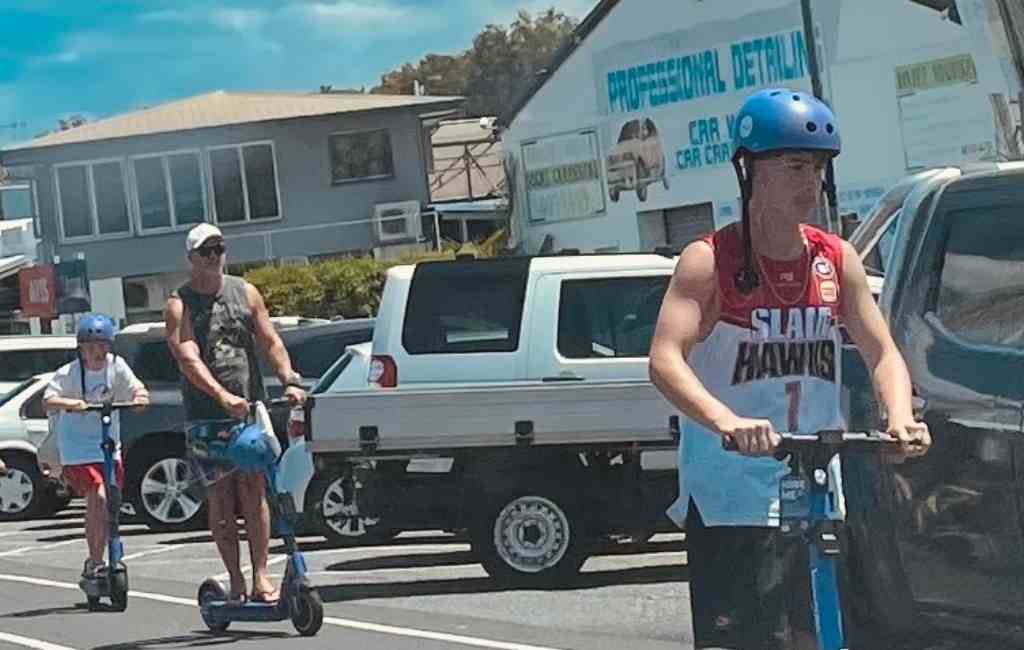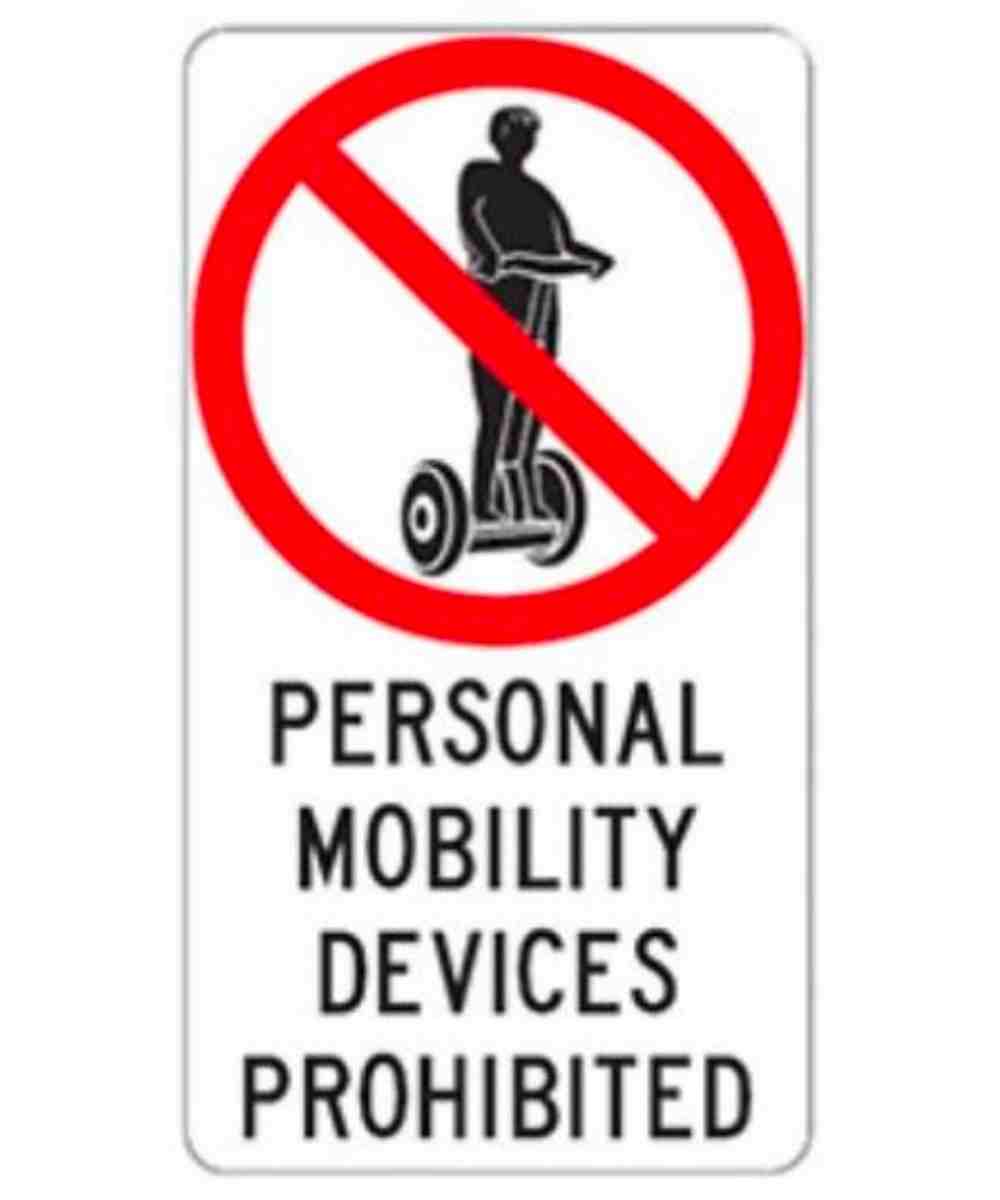
Police urge basic e-scooter safety
E-scooter safety

In recent years, electric scooters (e-scooters) have become very popular, with people using them either as a means of transport or for leisure.
With more e-scooters getting around, local police unfortunately come across many traffic crashes involving e-scooters, some of which could have been prevented if the rider was complying with basic safety rules.
Related: E-scooters all the rage in Port Douglas
Like any other vehicle or transportation device, there are laws in relation to the use of e-scooters in Queensland.

These laws are found in the Transport Operations (Road Use Management—Road Rules) Regulation 2009 and are in place to protect riders and the public.
An e-scooter is considered a personal mobility device. It is designed for single person use only and is not permitted to travel faster than 25km/h.
A person who is riding an e-scooter must wear a helmet at all times.
An e-scooter may only be ridden on a path and roads where the speed limit is 50km/h or less – it is not permitted to travel on a main road or highway.
Riders must keep left and give way to walkers and runners.
Riders must comply with laws for other road users such as: not drink and ride and not use a mobile phone while in motion.
The fine for not complying with these laws is $135.
To familiarise yourself with all the laws relating to e-scooters please visit the Queensland Transport website
If you do ride an e-scooter, please stay safe, have fun, and respect other road users and member of the public.
History of scooters
1915: Autoped introduces its stand-up scooter. Pulling back on the handlebar disengaged the clutch and applied the brake. Autoped continued production until 1921; Krupp of Germany built the Autoped under license from 1919 to 1922.
1986: Go-Ped introduces the first modern stand-up scooters, the "Roadster" and the "Sport".
2001: Go-Ped introduces the first full suspension stand-up electric scooter, the "Hoverboard".
2004: Evo Powerboards introduces the first scooter with a two-speed transmission, the "2x".
2009: Go-Ped introduces its first completely propane-powered scooter and go-kart, the "GSR Pro-Ped" and the "GSR Pro-Quad".
2013–2014: Light electric folding scooters powered by lithium batteries and brushless hub motors become available.
2018: Dockless scooter-sharing systems are rolled out in major cities, largely as expansions of bike-sharing systems.
E-scooters are popular in a number of countries, including Australia. They can be found in Austria, Belgium, France, Germany, Ireland, Netherlands, New Zealand, Norway, Poland, Singapore, Spain, Turkey, UK and US.
DTMR Rules
The Department of Transport and Main Roads (DTMR) have issued the following rules for personal mobility devices:
A broad range of personal mobility devices or rideables can be used in public spaces and road related areas in Queensland. You must comply with the road rules to use them.
Remember, people of all abilities use our paths and not everyone can easily move around a device that is obstructing free movement.
Rideables
A rideable in Queensland must:
- be designed for use by a single person only
- fit the following dimensions:
- 1,250mm in length by 700mm in width by 1,350mm in height
- 700mm in length by 1,250mm in width by 1,350mm in height
- have a maximum speed of 25km/h
- have a maximum weight of 60kg—when not carrying a person or load
- be powered by an electric motor
- have 1 or more wheels
- have a braking system
- have no sharp protrusions.
Rules for rideables
For everyone’s safety, ride in a safe and respectful manner, especially around pedestrians. Rideables don't need to be registered.For your safety, you must:
- be at least 16 years of age, or 12 with adult supervision
- wear an approved bicycle helmet, that is securely fitted, at all times (unless an exemption has been granted for medical or religious reasons)
- not carry passengers
- not use a mobile device
- not drink and ride
- have a working flashing or steady white light on the front, and a red light and reflector at the rear when travelling at night or in hazardous conditions.
When riding on a path, you must:
Keep left and give way to pedestrians.
Travel at a speed that allows you to stop safely to avoid colliding with a pedestrian.
Travel at a safe distance from a pedestrian so you can avoid a collision.
Keep left of oncoming bicycles and other personal mobility devices.
Only use the bicycle side of a shared path.
Using a rideable
Rideables should be used on paths wherever possible. Some limited access to roads is permitted but only in specific circumstances. For example, you can use your rideable to cross a road or avoid an obstruction on a path for up to 50m.
You are allowed to stay on your personal mobility device to cross a road at a designated crossing.
You can also ride on local streets, where it is safe to do so. A local street is a road with a speed limit of 50km/h or less. It must have no dividing line or median strip and if it is a one-way road, it can’t have more than one lane.
You must not ride on main roads or streets in the Brisbane CBD.
When permitted to ride on a street you must keep as far to the left side of the road as practicable.
Just like bicycle riders, you may ride alongside 1 other person or vehicle travelling on a road in the same direction. However, you must not cause a traffic hazard by moving into the path of a driver or unreasonably obstruct the path of any other road user.
You must not:
- be towed by another vehicle
- hold on to the back of another vehicle
- ride within 2m of the rear of a moving motor vehicle continuously for more than 200m.
Restricted areas
Personal mobility device prohibited sign
You must not travel past a personal mobility devices prohibited sign—your local council or land owners may prohibit personal mobility devices in areas like malls, esplanades or jetties.
You should also contact your local council to find out if there are any local laws that apply to the use of rideables.
Penalties for non-compliance at least $135
If you get caught not complying with these rules you will be fined at least $135.
Thank you!
Newsport thanks its advertising partners for their support in the delivery of daily community news to the Douglas Shire. Public interest journalism is a fundamental part of every community.
Got a news tip? Let us know! Send your news tips or submit a letter to the editor here.
* Comments are the opinions of readers and do not represent the views of Newsport, its staff or affiliates. Reader comments on Newsport are moderated before publication to promote valuable, civil, and healthy community debate. Visit our comment guidelines if your comment has not been approved for publication.